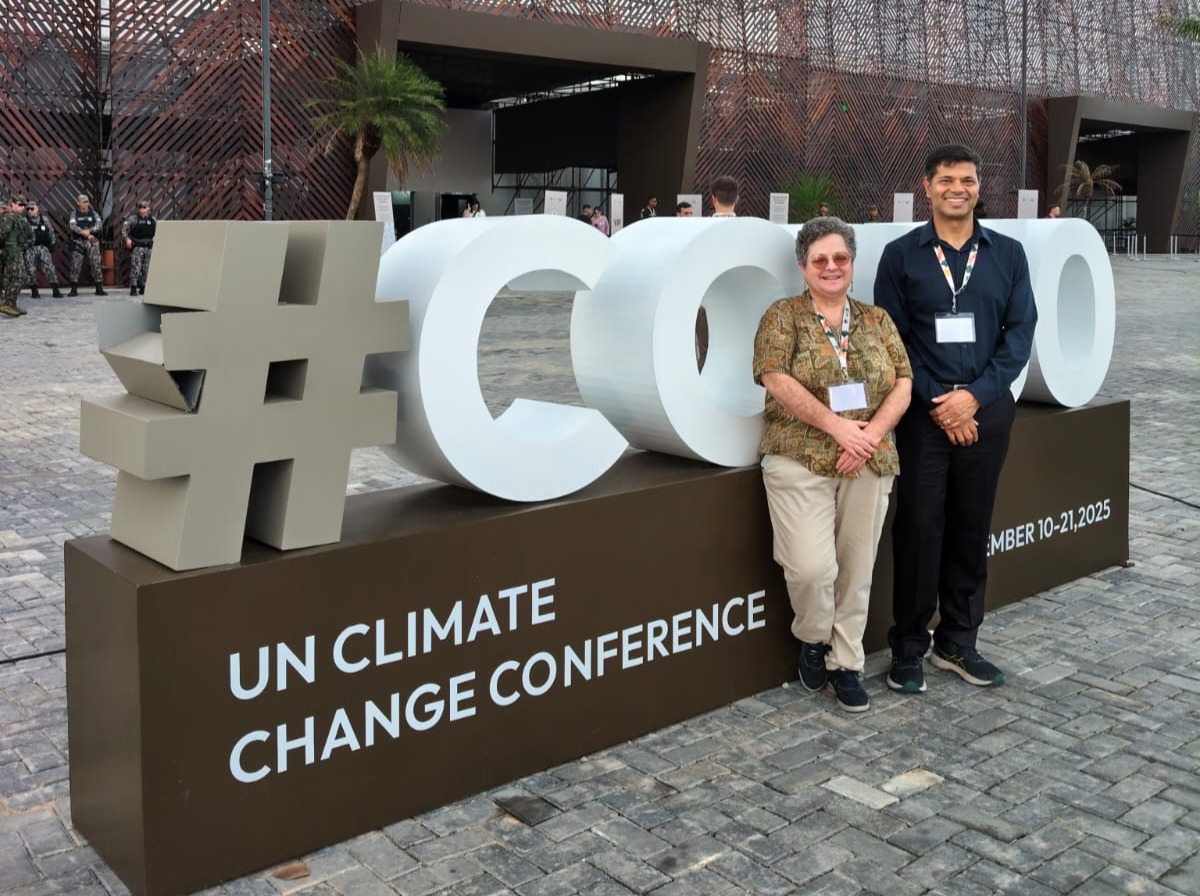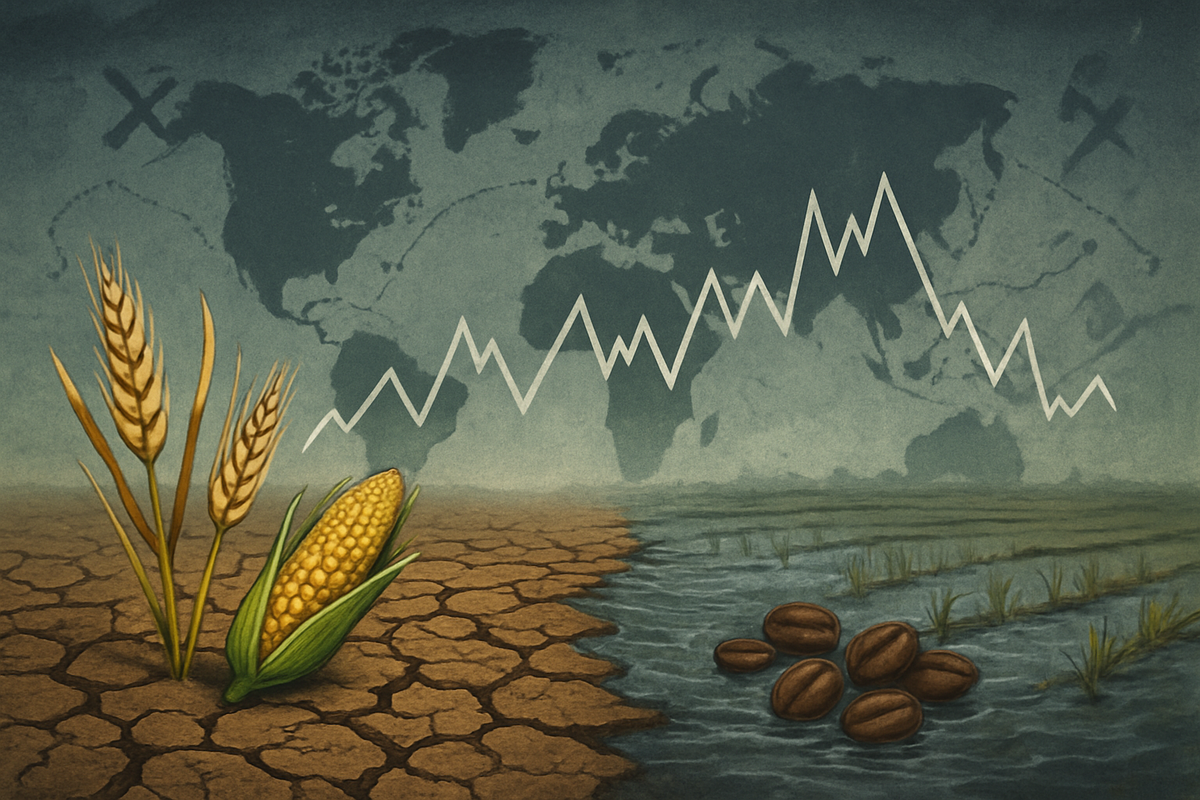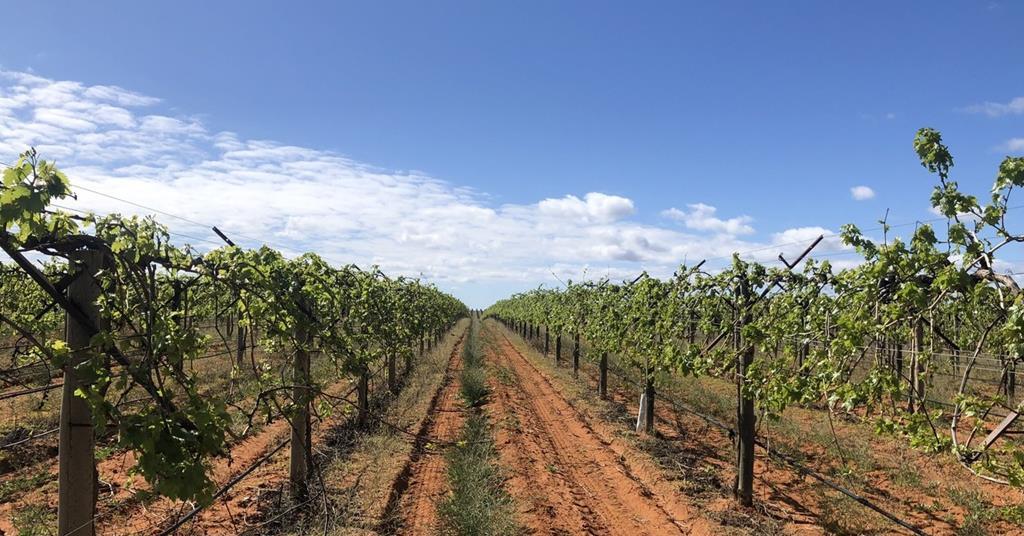As millions of Americans prepare to lose SNAP benefits, some states are moving to bridge the gap – NBC News

Report on State-Level Responses to Federal Food Assistance Suspension and Implications for Sustainable Development Goals
Introduction: A Challenge to SDG 1 and SDG 2
The suspension of the federal Supplemental Nutrition Assistance Program (SNAP) due to a government shutdown poses a significant threat to the achievement of key Sustainable Development Goals (SDGs) in the United States. This disruption directly impacts over 40 million low-income individuals, undermining progress on:
- SDG 1 (No Poverty): SNAP is a primary social protection system that helps lift families out of poverty. Its suspension exacerbates financial hardship for the nation’s most vulnerable populations.
- SDG 2 (Zero Hunger): The program is the cornerstone of food security for millions. The halt in benefits creates an immediate crisis, increasing hunger and food insecurity.
- SDG 3 (Good Health and Well-being): Food insecurity is linked to adverse health outcomes. The suspension particularly affects the nutrition of children, seniors, and pregnant women.
- SDG 10 (Reduced Inequalities): The impact is disproportionately felt by low-income households, widening the inequality gap.
In response, numerous state governments have initiated emergency contingency plans. These actions reflect an urgent effort to mitigate the negative impacts on the SDGs through local governance, partnerships, and resource allocation.
State and Territory Contingency Measures Aligned with the SDGs
Arizona
To uphold SDG 2 (Zero Hunger), the state has taken the following actions:
- Disbursed $1.8 million in state funds to address the lapse in federal benefits.
- Allocated $1.5 million directly to food banks across the state.
- Launched a new emergency program with $300,000 to provide $30 vouchers for fresh produce, supporting SDG 3 (Good Health and Well-being).
California
In a multi-sectoral approach reflecting SDG 17 (Partnerships for the Goals), the state has:
- Deployed the state’s National Guard and California Volunteers to support food bank logistics.
- Fast-tracked approximately $80 million in state support to food banks to combat hunger (SDG 2).
Colorado
To ensure food security (SDG 2) and community resilience (SDG 11), the state has:
- Requested up to $10 million for food banks and pantries.
- Sought to extend funding for the Women, Infants, and Children (WIC) program, supporting SDG 3 (Good Health and Well-being).
- Launched the “Feeding Colorado” initiative to encourage donations and partnerships.
Connecticut
Focusing on SDG 2 (Zero Hunger), the state announced:
- $3 million in emergency state funds for Connecticut Foodshare to support its network of food banks.
Delaware
As an institutional response to protect vulnerable populations (SDG 1 and SDG 2), the governor has:
- Declared a state of emergency to authorize state funding for SNAP benefits on a week-by-week basis.
- Announced further assistance for food pantries.
Guam
To maintain social protection systems (SDG 1) and ensure food access (SDG 2), the territory has:
- Signed a law appropriating funds to cover $12.3 million in SNAP and $800,000 in WIC benefits through November.
Hawaii
Implementing an integrated approach to address SDG 1 (No Poverty) and SDG 2 (Zero Hunger), Hawaii has:
- Opened applications for a relief program providing up to four months of support for housing and utility payments.
- Provided $2 million in state funds to food banks.
Illinois
In a direct financial commitment to achieving SDG 2 (Zero Hunger), the state has:
- Directed $20 million to food banks through an executive order.
Iowa
Demonstrating a partnership approach (SDG 17) to bolster food security (SDG 2), the state has:
- Ordered the Iowa National Guard to prepare for food distribution missions.
- Directed the use of state funds to match cash donations to regional food banks up to $1 million.
Kentucky
To reduce poverty (SDG 1) for families affected by the shutdown, the state will:
- Temporarily fund the Temporary Assistance for Needy Families (TANF) program in November using state resources.
Louisiana
In an institutional response (SDG 16) to a crisis threatening SDG 1 and SDG 2, the governor has:
- Declared a state of emergency, which could allow the Legislature to authorize stabilization funds.
Maine
Exemplifying a multi-stakeholder approach (SDG 17) to SDG 2, the state has:
- Allocated $1 million from the governor’s contingency account to food banks and anti-hunger programs.
- Partnered with the John T. Gorman Foundation, which will contribute an additional $250,000.
Maryland
Through institutional action (SDG 16) to address food security (SDG 2) and reduce inequality (SDG 10), the governor has:
- Declared a state of emergency.
- Issued an executive order to provide $10 million from the Fiscal Responsibility Fund to food security partners.
Massachusetts
To support community-based organizations on the front lines of SDG 2, the state is:
- Advancing an additional $4 million of existing state budget resources to local food banks, bringing the monthly total to $8 million.
Minnesota
In a targeted action to ensure access to food for all (SDG 2), the state will:
- Provide $4 million in new funding for food shelves.
Missouri
To address SDG 1 (No Poverty) and SDG 2 (Zero Hunger) for vulnerable groups, the state will:
- Distribute $5 million in TANF funds to food banks.
- Transfer $10.6 million to provide meals for seniors.
Nevada
To strengthen local response capacity (SDG 11) to the food security crisis (SDG 2), the governor has:
- Directed state teams to expand support for food banks and community partners.
- Prepared to engage the Nevada National Guard for food distribution.
New Hampshire
In a partnership (SDG 17) to improve food access and support SDG 2, the state is:
- Working with the New Hampshire Food Bank to provide mobile food pantries specifically for SNAP participants.
New Jersey
To support institutions fighting hunger (SDG 2) and poverty (SDG 1), the state will:
- Accelerate the delivery of over $42.5 million in food and hunger grants to Emergency Food Organizations.
New Mexico
Implementing a rapid social protection measure to uphold SDG 2 and address inequality (SDG 10), the state will:
- Provide $30 million in state funds to be distributed to eligible residents’ existing EBT cards.
New York
In a comprehensive response combining financial aid, institutional action (SDG 16), and partnerships (SDG 17) to combat hunger (SDG 2), the governor has:
- Declared a state of emergency.
- Committed an additional $65 million in new state funds for emergency food assistance.
- Deployed Empire State Service Corps and SUNY Corps members to support local food banks.
North Carolina
Through a collaborative effort reflecting SDG 17 (Partnerships for the Goals) to advance SDG 2, the state has:
- Directed nearly $18 million in contributions to local food banks, sourced from the state, AmeriHealth Caritas, the David & Nicole Tepper Foundation, and other organizations.
North Dakota
In a targeted intervention to protect food security (SDG 2) and health (SDG 3), the state has:
- Directed over $1.5 million in state funds to food programs, with $915,000 for food banks and $600,000 for the WIC program.
Ohio
To combat extreme poverty (SDG 1) and hunger (SDG 2), the governor signed an executive order to:
- Provide up to $25 million in food assistance.
- Allocate $7 million to food banks.
- Distribute up to $18 million in emergency relief benefits for residents at or below 50% of the federal poverty level.
Oregon
Taking institutional measures (SDG 16) to address an acute threat to SDG 2, the governor has:
- Declared a 60-day food security emergency.
- Directed $5 million from TANF carryover funds to food banks.
Rhode Island
To alleviate poverty (SDG 1) and food insecurity (SDG 2) for a vulnerable demographic, the state will:
- Use $6 million in TANF funds to provide an emergency payment to over 20,000 eligible families with children.
- Provide $200,000 to support the RI Community Food Bank.
South Carolina
Adopting a partnership-based approach (SDG 17) to support the logistics of food distribution (SDG 2), the governor is:
- Directing the South Carolina State Guard to assist food banks.
- Activating the Central Carolina Community Foundation’s One SC Fund for a coordinated charitable giving campaign.
Virginia
To ensure continuity of support for SDG 1 and SDG 2, the state has:
- Established the Virginia Emergency Nutrition Assistance initiative to provide comparable state-supported funds to recipients’ EBT cards.
- Sent an additional $1 million in state funds to Virginia food banks.
Washington
In a sustained financial commitment to the infrastructure needed for SDG 2 (Zero Hunger), the state will:
- Direct nearly $2.2 million per week to support food banks for the duration of the shutdown.
Washington, DC
In a direct municipal action to uphold social protection systems (SDG 1) and ensure food security (SDG 2, SDG 3), the District will:
- Use local funds to ensure residents enrolled in SNAP and WIC receive their November benefits.
West Virginia
Implementing a multi-pronged strategy involving public-private partnerships (SDG 17) to address the food security crisis (SDG 2), the state has:
- Launched a statewide donation drive to support food banks.
- Identified up to $13 million in state funding to match private and charitable donations.
- Directed the state’s National Guard to support logistics and distribution efforts.
Analysis of Sustainable Development Goals (SDGs) in the Article
-
Which SDGs are addressed or connected to the issues highlighted in the article?
The article primarily addresses issues related to food security, poverty, and institutional stability, connecting directly to several Sustainable Development Goals (SDGs). The most relevant SDGs are:
- SDG 1: No Poverty: The article focuses on “low-income Americans” who rely on federal assistance programs like the Supplemental Nutrition Assistance Program (SNAP) and Temporary Assistance for Needy Families (TANF). The suspension of these benefits directly threatens the economic stability of millions, pushing them further into poverty.
- SDG 2: Zero Hunger: This is the central theme of the article. The suspension of SNAP, a “key benefits program” for “federal food assistance,” directly impacts the ability of over 40 million people to access food. The responses from states, such as providing emergency funds to food banks and creating fresh food voucher programs, are direct actions to combat hunger and ensure food security.
- SDG 10: Reduced Inequalities: The article highlights that the suspension of benefits disproportionately affects vulnerable groups, including “mothers, babies, and the most vulnerable among us,” as well as children and seniors. The crisis exacerbates existing inequalities by removing a critical support system for low-income populations. State actions are attempts to mitigate this growing disparity.
- SDG 16: Peace, Justice and Strong Institutions: The root cause of the crisis is a “government shutdown,” which represents a failure of effective federal institutions. The article also mentions institutional responses, such as 25 states suing the Agriculture Department and governors declaring a “state of emergency,” which are actions aimed at seeking justice and providing an effective governmental response to the failure at the federal level.
-
What specific targets under those SDGs can be identified based on the article’s content?
Based on the article’s discussion of social safety nets, food access, and institutional responses, the following specific SDG targets can be identified:
- Target 1.3: Implement nationally appropriate social protection systems and measures for all, including floors, and by 2030 achieve substantial coverage of the poor and the vulnerable. The article is centered on the disruption of a major social protection system (SNAP) that serves over “40 million people.” State efforts to provide emergency funds, like Virginia’s “Virginia Emergency Nutrition Assistance initiative,” are attempts to create temporary social protection measures to cover the vulnerable.
- Target 2.1: By 2030, end hunger and ensure access by all people, in particular the poor and people in vulnerable situations, including infants, to safe, nutritious and sufficient food all year round. The suspension of SNAP directly threatens this target. Actions described, such as Arizona providing a “$30 voucher to purchase fresh produce” and numerous states funneling millions of dollars to food banks, are direct efforts to ensure continued access to food for vulnerable populations.
- Target 10.4: Adopt policies, especially fiscal, wage and social protection policies, and progressively achieve greater equality. The article details the failure of a federal social protection policy and the subsequent adoption of emergency state-level fiscal policies to counteract the negative impact. For example, New York committed “$65 million in new State funds for emergency food assistance,” and Ohio allocated “as much as $25 million in food assistance.”
- Target 16.6: Develop effective, accountable and transparent institutions at all levels. The federal government shutdown highlights a failure of effective institutions. In response, state governments are acting to fill the void, demonstrating an attempt to provide effective governance. The lawsuit announced by “Democratic leaders from 25 states” against the Agriculture Department is an action to hold a federal institution accountable.
-
Are there any indicators mentioned or implied in the article that can be used to measure progress towards the identified targets?
Yes, the article provides numerous quantitative and qualitative indicators that can be used to measure the situation and the response efforts:
- Number of beneficiaries of social protection programs: The article repeatedly states the number of people affected by the SNAP suspension, which serves as a direct indicator for Target 1.3. Examples include “more than 40 million people across the country,” “Nearly 900,000 Arizonans,” “About 5.5 million Californians,” and “Nearly three million New Yorkers.”
- Government expenditure on social protection and food security programs: The article provides specific monetary values for the emergency funding allocated by states, which is a clear indicator for Targets 1.3 and 2.1. Examples include Arizona’s “$1.8 million,” California’s “$80 million,” Colorado’s “$10 million,” and New York’s “$65 million.”
- Proportion of population vulnerable to food insecurity: While not stating a percentage, the article implies this by listing the number of SNAP recipients as a share of the population. For instance, it notes that in Guam, the 40,000 recipients represent “nearly a third of the territory’s population,” and in New Mexico, the 460,000 recipients are “21% of the state’s population, that’s the highest participation rate in the country.”
- Institutional response mechanisms: The article mentions several actions that serve as qualitative indicators of institutional response (Target 16.6). These include the number of states declaring a “state of emergency” (e.g., Delaware, Louisiana, Maryland), the deployment of the National Guard (e.g., California, Iowa), and legal actions taken, such as the lawsuit by 25 states.
-
Create a table with three columns titled ‘SDGs, Targets and Indicators” to present the findings from analyzing the article. In this table, list the Sustainable Development Goals (SDGs), their corresponding targets, and the specific indicators identified in the article.
SDGs Targets Indicators SDG 1: No Poverty 1.3: Implement nationally appropriate social protection systems and measures for all. - Number of people covered by social protection programs (e.g., “more than 40 million people” on SNAP).
- Amount of state funds allocated to emergency assistance programs (e.g., Virginia’s state-supported funds, Ohio’s $18 million in emergency relief).
SDG 2: Zero Hunger 2.1: End hunger and ensure access by all people to safe, nutritious and sufficient food. - Total number of people relying on food assistance (e.g., “About 1.4 million Ohioans receive SNAP benefits”).
- Amount of emergency funding directed to food banks and pantries (e.g., Arizona’s “$1.5 million,” New York’s “$65 million”).
- Creation of new food access programs (e.g., Arizona’s “$30 voucher to purchase fresh produce”).
SDG 10: Reduced Inequalities 10.4: Adopt policies, especially fiscal and social protection policies, to achieve greater equality. - Identification of vulnerable groups affected (“low-income Americans,” “mothers, babies,” “children,” “seniors”).
- State-level fiscal policies enacted to support vulnerable populations (e.g., West Virginia matching donations up to “$13 million”).
- Number of people at or below a certain poverty level receiving aid (e.g., Ohio targeting relief for those “at or below 50% of the federal poverty level”).
SDG 16: Peace, Justice and Strong Institutions 16.6: Develop effective, accountable and transparent institutions at all levels. - Number of states declaring a “state of emergency” to provide an effective institutional response.
- Number of states deploying the National Guard to assist with logistics and distribution.
- Legal actions taken to hold institutions accountable (e.g., “Democratic leaders from 25 states also announced they would sue the Agriculture Department”).
Source: nbcnews.com
What is Your Reaction?
 Like
0
Like
0
 Dislike
0
Dislike
0
 Love
0
Love
0
 Funny
0
Funny
0
 Angry
0
Angry
0
 Sad
0
Sad
0
 Wow
0
Wow
0



















































.jpg.webp?itok=0ZsAnae9#)

























